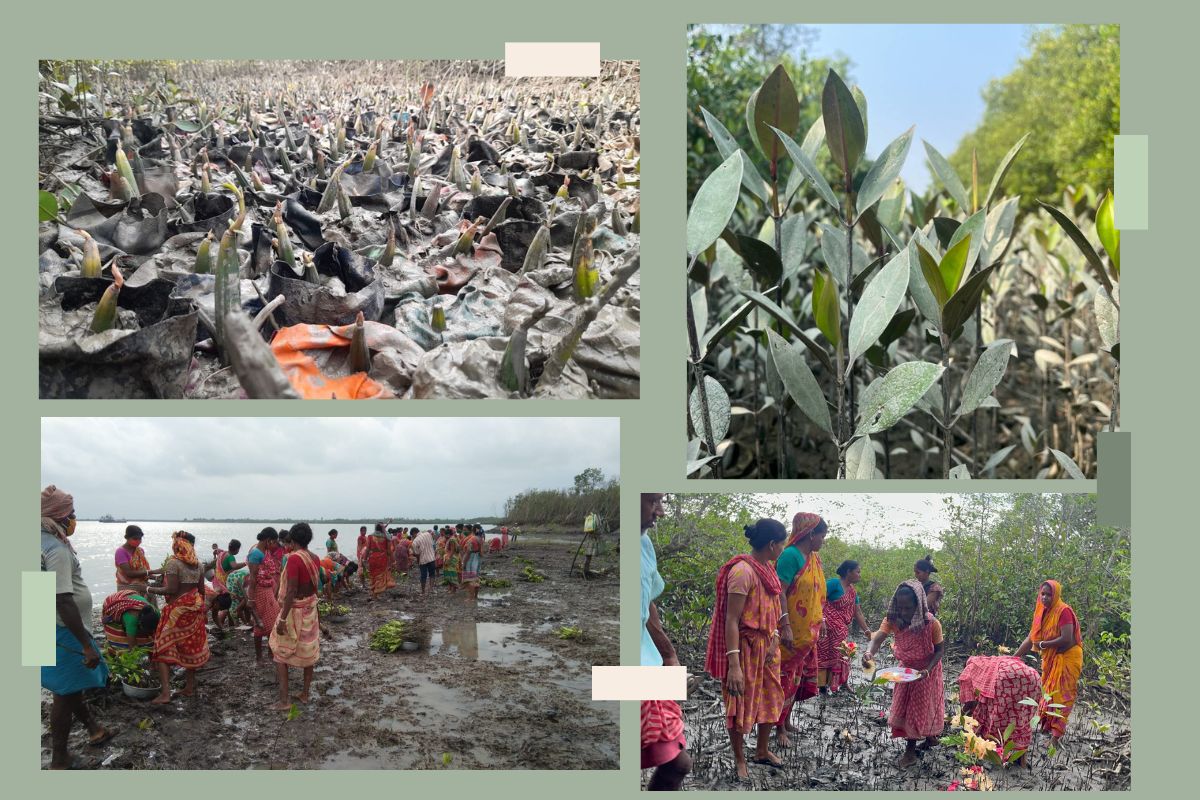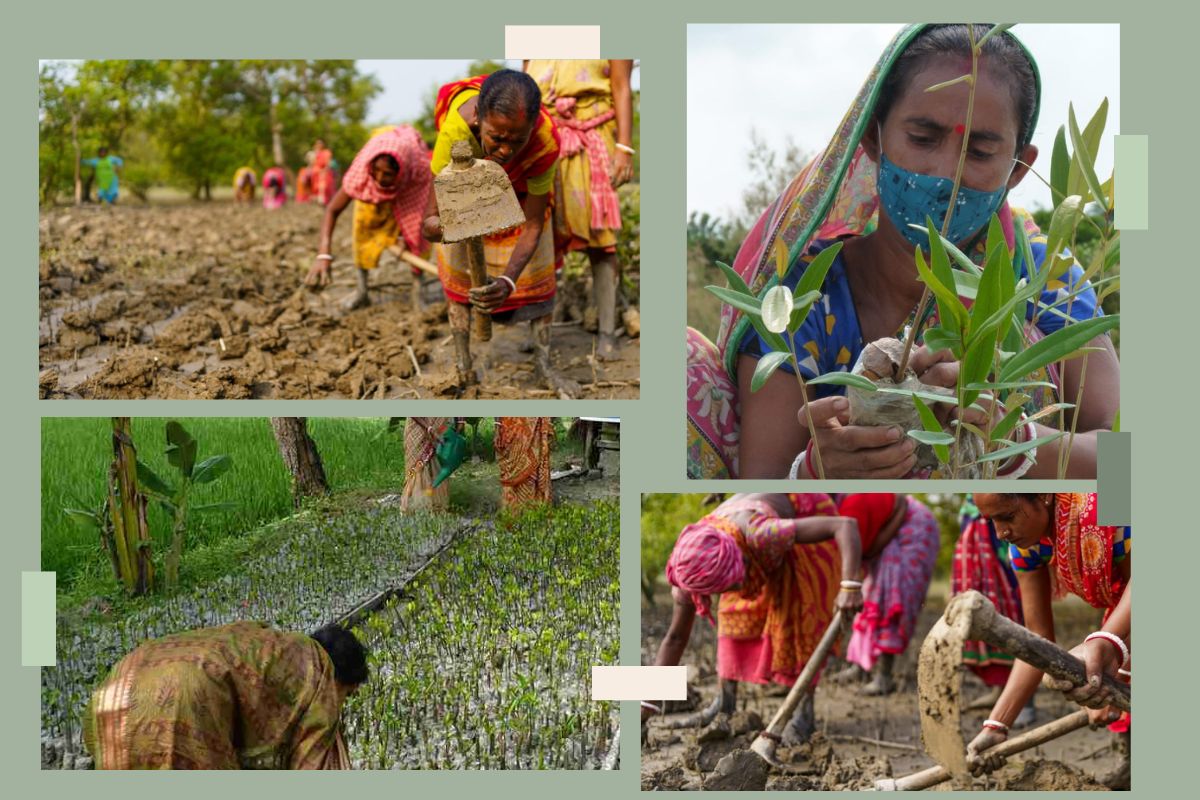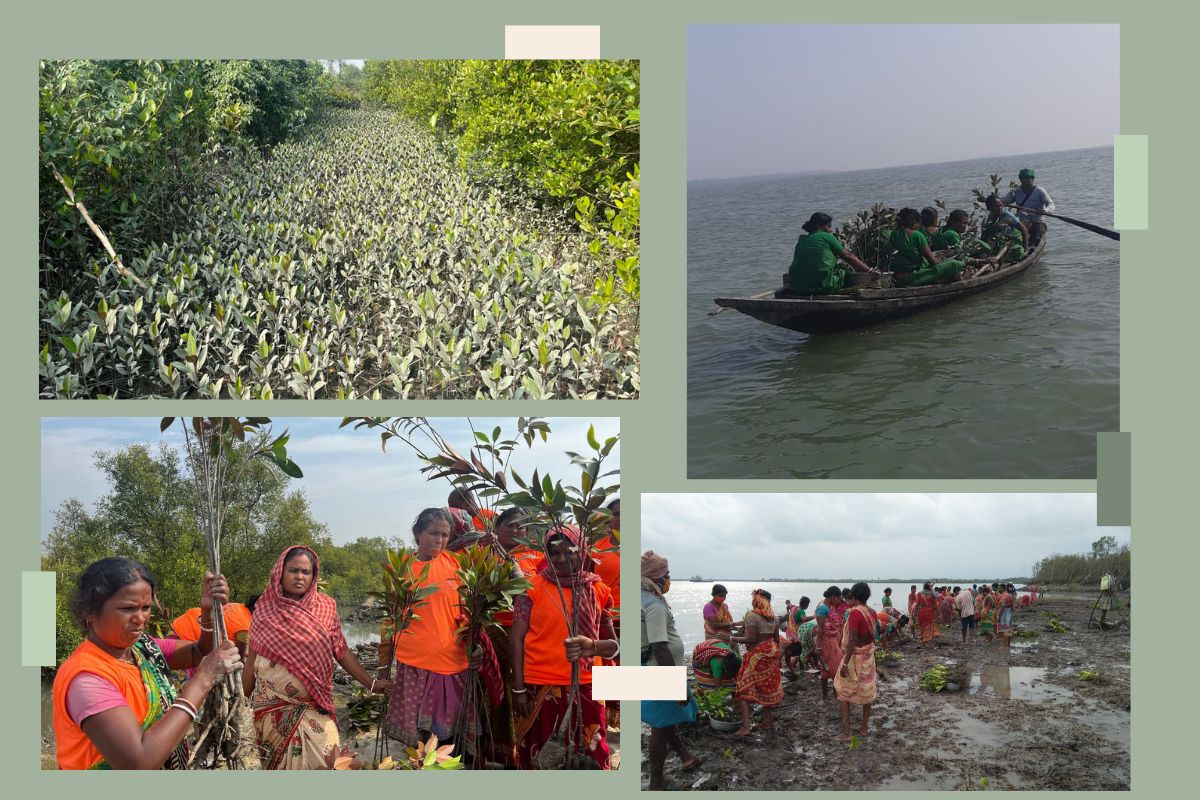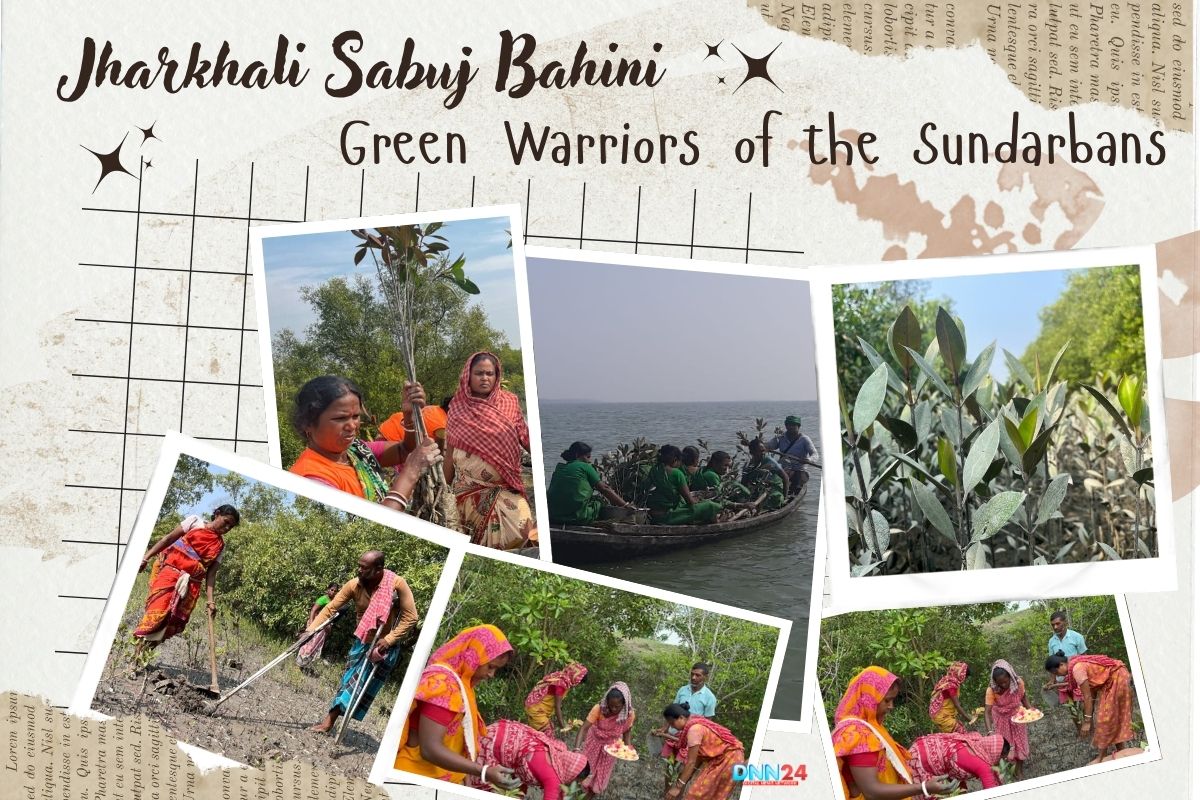A Story of Community Resilience and Environmental Hope
In 2014, when Mother Nature unleashed her fury upon the Sundarbans again, something extraordinary emerged from the devastation. The Jharkhali Sabuj Bahini wasn’t just born—it rose like a phoenix from the ashes of destroyed crops and shattered dreams. The organization’s genesis lies in a simple yet profound realization: when cyclones, floods, and rising seas repeatedly devastate agricultural lands and fishing communities, the answer isn’t to flee—it’s to fight back with nature’s weapons.
Every year, saltwater intrusion poisoned fertile fields, forcing families to abandon their ancestral homes in search of distant livelihoods. This heartbreaking migration cycle was draining the Sundarbans of their human spirit. The founders recognized that mangrove plantations could serve as living shields against nature’s wrath while creating sustainable income streams. What started as an environmental necessity became a beacon of hope for community resilience in one of India’s most vulnerable ecosystems.
The Visionary: Prasanta Sarkar’s Awakening
Sometimes, the most powerful movements begin with a single moment of heartbreak. For Prasanta Sarkar, that moment came in 2011 when he was just a Class XI student watching his carefully planted trees mercilessly uprooted by yet another cyclone. The young man’s frustration transformed into fierce determination—if individual efforts couldn’t survive nature’s assault, collective action would have to succeed where solo attempts failed.
Prasanta’s genius lay not just in recognizing the problem but in identifying the solution hiding in plain sight. He noticed that while men were away fishing or working, women had flexible daytime schedules and untapped leadership potential. His strategic decision to involve women as the organization’s backbone wasn’t just practical but revolutionary. This inclusive approach transformed a one-person environmental mission into a community-driven movement that inspires ecological consciousness across the Sundarbans region.
The Million-Tree Dream: Plantation Excellence
Numbers tell stories, and the Jharkhali Sabuj Bahini’s story is written in over one lakh (100,000) mangrove saplings that now stand as green sentinels along riverine boundaries. This isn’t just tree planting—it’s precision environmental engineering executed with community hands and scientific minds.

The process reads like nature’s own recipe for success: seed collection during optimal high tide seasons, meticulous sorting to eliminate damaged specimens, careful nursery nurturing for 2-3 months, followed by strategic transplantation in locations where saplings can establish robust root systems. Community members, predominantly women, have become expert botanists, understanding soil salinity, tidal patterns, and seasonal cycles with intuitive wisdom. This marriage of traditional knowledge and scientific methodology has created survival rates that would make professional foresters envious.
Transforming Lives and Landscapes
The impact of Jharkhali Sabuj Bahini extends far beyond impressive plantation statistics—it’s rewriting the narrative of human-environment interaction in the Sundarbans. Where once stood vulnerable coastlines, now thriving mangrove forests serve as natural shock absorbers, dramatically reducing cyclone and storm surge damage to agricultural lands and residential areas.
The environmental renaissance has triggered an economic revival. Improved fish populations in mangrove-protected waters mean better catches for local fishermen. Saltwater intrusion prevention allows farmers to continue cultivation even after minor floods. But most remarkably, the initiative has sparked a social transformation. Women have discovered meaningful engagement beyond household chores, plantation activities have evolved into community festivals, and the psychological shift from environmental helplessness to ecological empowerment has created a generation that believes in fighting climate change rather than fleeing it.
Women: The Unsung Heroes
In a region where women’s voices often go unheard, Jharkhali Sabuj Bahini has created an inspiring and practical platform for environmental leadership. These women haven’t just joined an organization—they’ve become environmental educators, technical experts, and community leaders rolled into one.
From identifying quality seeds to managing nurseries and leading plantation drives, women members have developed expertise that rivals professional conservationists. Their attention to detail and patience have resulted in significantly higher sapling survival rates. More importantly, they’ve become environmental ambassadors within their families and communities, spreading mangrove conservation awareness with the passion of true believers. Their willingness to work without monetary compensation demonstrates the commitment that money cannot buy.

Nature’s Shield: Disaster-Proofing Communities
The Sundarbans’ geography makes it a natural disaster magnet, but Jharkhali Sabuj Bahini has turned this vulnerability into an opportunity for innovative resilience building. Their mangrove plantations function as living breakwaters, remarkably reducing storm velocity and tidal wave impact.
During cyclone seasons, protected areas experience substantially less damage than unprotected zones. The dense mangrove root systems stabilize soil and prevent erosion, while canopies break wind force and dissipate storm energy. This natural protection system requires minimal maintenance while providing decades of benefits—proving more sustainable and cost-effective than artificial barriers. The organization’s success has inspired similar initiatives across the Sundarbans, creating an interconnected network of natural disaster defense systems.
Overcoming the Impossible: Challenges and Solutions
Every environmental success story has its share of seemingly insurmountable obstacles, and Jharkhali Sabuj Bahini’s journey has been no exception. Transporting saplings to remote sites requires boats and manual labor across challenging terrain. Weather unpredictability demands flexible scheduling that accommodates tidal cycles and seasonal patterns. Harsh coastal conditions threaten sapling survival rates.
Yet, each challenge has become an opportunity for innovation. Community coordination ensures efficient resource utilization during favorable weather windows. Non-coercive participation policies maintain volunteer enthusiasm while respecting individual constraints. Strategic site selection and natural protection placement have dramatically improved survival rates. Most remarkably, financial constraints have strengthened rather than weakened the organization by forcing cost-effective innovation and deepening community ownership.
The Bootstrap Model: Financial Independence
In an era when environmental organizations chase grants and government funding, Jharkhali Sabuj Bahini has chosen a radically different path—complete financial self-reliance built on community contributions and volunteer labor. This isn’t poverty; it’s strategic independence that ensures long-term sustainability and local ownership.
Small individual donations occasionally provide modest support, but the organization’s strength lies in its ability to operate effectively without external funding. Seed collection, plantation activities, and nursery management rely on volunteer efforts and local resources. This bootstrap approach has created a resilient model to survive funding droughts while maintaining deep community commitment. Members understand that success depends on their participation rather than external resources—creating ownership that money cannot buy.
Ripple Effects: Inspiring Regional Transformation
Success breeds success, and Jharkhali Sabuj Bahini’s achievements have created powerful ripple effects throughout the Sundarbans region. Their community-based environmental model has been studied, admired, and replicated by neighboring villages, creating a network of environmental protection initiatives across multiple communities.
The organization has become proof that grassroots initiatives can achieve significant environmental impact without large-scale funding or government support. Local communities now recognize direct connections between mangrove plantations and disaster protection, improved fishing opportunities, and enhanced biodiversity. This awareness has evolved into a regional culture of environmental responsibility extending beyond tree planting to encompass holistic approaches to sustainable development.
Vision 2030: Scaling Dreams into Reality
Jharkhali Sabuj Bahini’s plans read like an environmental manifesto for community-driven change. The primary goal involves scaling their successful model across the entire Sundarbans region, creating a comprehensive network of community-based environmental protection that could serve as a global template for climate resilience.

Educational initiatives aim to establish study centers providing quality education while preventing youth migration to cities. Kitchen gardening and small-scale agriculture programs will create additional income sources while promoting sustainable farming practices. Eco-tourism development could showcase thriving mangrove plantations while providing sustainable financing for continued environmental work. These aren’t just plans—they’re blueprints for transforming environmental conservation into economic opportunity.
Partnership Potential: Collaboration Without Compromise
While fiercely independent, Jharkhali Sabuj Bahini remains strategically open to collaborations that align with their community-based values. Government partnerships could provide technical support and resources for scaling successful initiatives while creating green employment opportunities. NGO collaborations could bring expertise and networks that enhance capacity without compromising local ownership.
The key lies in maintaining community-based approaches while leveraging external support to accelerate impact. Any future partnerships must respect the organization’s core values of voluntary participation, community ownership, and sustainable development, ensuring that external support strengthens rather than undermines its successful grassroots model.
Jharkhali Sabuj Bahini, demonstrates how community-driven environmental action can transform landscapes and lives in the Sundarbans region of West Bengal, India. It’s proof that when ordinary people decide to do extraordinary things, they can literally change the world—one mangrove at a time.
Also Read: World Environment Day: Wake Up and Smell the Smog! An Analysis of Indian Realities
You can connect with DNN24 on Facebook, Twitter, and Instagram and subscribe to our YouTube channel.

